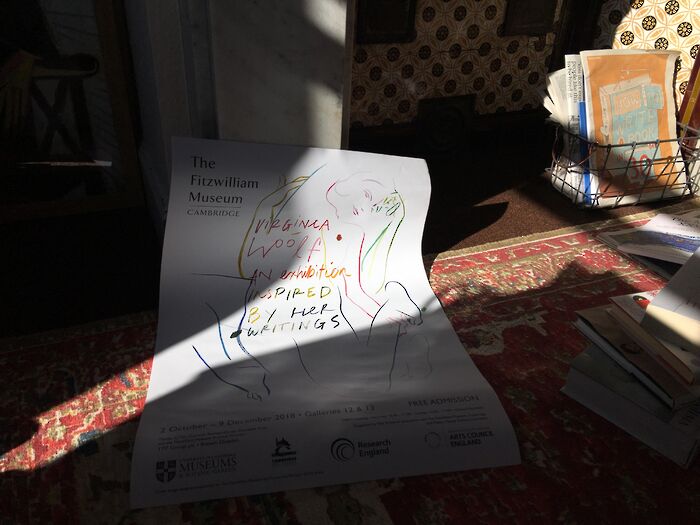Seeing double: ‘About Time’ and the impossibility of newness in fashion
Fashion Editor Martha French reviews this year’s Costume Institute exhibition
As week 5 approaches, it’s getting to that point in term where fashion is the furthest thing from my mind, and quite simply all I want (or rather, can be bothered) to wear are my baggiest trousers and Birkenstocks and socks. It is, in turn, slightly hard to say whether the Metropolitan Museum of Art’s premiering of their 2020 Costume Institute Exhibition came at the perfect or worst time. Either way, it is very much here, and I am very much obsessed.
Presented by Louis Vuitton with corporate sponsorship from Conde Nast, the exhibition, entitled ‘About Time: Fashion and Duration’, was originally intended to open in May, accompanied by the infamous Met Gala, but was delayed as a result of the Covid-19 pandemic. Appropriately, as it were, it is centred around the idea of fashion’s “disrupted timeline”, comprising of two clock faces encircling two rooms, within which each ‘minute’ showcases two - primarily, and strikingly, black - outfits. The first clock face represents the linear development of fashion over the past 150 years (since the Met’s establishment) whilst the second acts as an ‘interruption’, with each piece offering a mirroring silhouette for its linear counterpart, which it either pre- or post-dates.
These two ‘timelines’ thus unravel alongside each other, with past and present merging into one, and in turn undermining the industry’s claim to be bent on progress, instead opting to expose the importance - and in fact great success - of repetition, of reiteration, of reworking. ‘About Time’ opens with a quote from Virginia Woolf’s 1928 novel Orlando on time-keeping, setting up for a sequence of excerpts (recorded by Nicole Kidman, Meryl Streep and Julianne Moore!) which narrate the exhibition, accompanied - much to my delight - with an attached ‘Virginia Woolf reading list’.
Its highlights - observed through YouTube rather than in real life (sad) - include minute two, which marries American’s 1877 Afternoon Dress with Alexander McQueen’s iconic “Bumster” Skirt (1995). Together, the pair offers two innovative long-waisted silhouettes, one achieved through modest vertical seaming, and the latter through a scandalously low waist. Across from each other, a narrative of high fashion’s progress as one of doubling back and of reinterpretation could not be more explicit.
“The exhibition exposes the importance - and in fact great success - of repetition, of reiteration, of reworking in fashion”
The same can be said for minute seventeen, whereby Lanvin’s wide-hipped 1927 evening dress is echoed in Jonathan Anderson’s 2020 piece for Loewe, which makes use of a theatrical “shelf-like extension” in a similarly avant-garde approach to the creation of an alternative ‘robe de style’ cut. But perhaps the most ingenious duet of all occurs at minute forty nine, when Issey Miyake’s “Flying Saucer” Dress (1994) - complete with futuristic folds fit for expansion and compression where fit - finds a friend in Mariano Fortuny’s 1930 “Delphos” Dress, its rigid construction appearing almost as an overlay of Miyake’s later reincarnation.
For this is an exhibition that posits inevitable recyclability as fashion’s greatest quality and not its downfall, demanding an industry always in motion to slow down the clock. Yes, it is conceptually confused - darting from Woolfian witticisms to Henry Bergon’s la durèe and back again before you’ve had a chance to unpack any of it - but that is the point, and in fact it is this artful crossing of wires within which its genius lies.
“It presents the industry not simply as cyclical, but as geometric, spherical, and everything in between”
In fact, its nonlinear quality speaks to the very chaos it wishes to celebrate, asking us to understand the industry not simply as cyclical, but as geometric, spherical, and everything in between. In an - albeit feigned - attempt to map 150 years of fashion, the exhibition achieves an outline so jagged it feels shapeless, and in doing so comes to embody the mirroring, the fragmentation, and the conflict that has driven the last century and a half, both within and outside of the context of clothing. And of course there is no one better than Woolf (who spent a lifetime devoted to the messiness of time, from the gong of Big Ben that punctuates Mrs Dalloway to The Waves’s preoccupation with the slipperiness of ageing) to give language to such a bold visual statement.
Curator Andrew Bolton notes how each pair is able to achieve “temporal autonomy” as it is freed from the “confines of chronology”. This quirkiness, however pretentious, is unavoidably related to the timelessness of our current moment, particularly as we prepare to put our lives on pause once more. Even its own opening, nearly sixth months later than intended, seems to enrich its meaning: yes, time is out of joint, but hasn’t it always been?
 News / Cambridge study finds students learn better with notes than AI13 December 2025
News / Cambridge study finds students learn better with notes than AI13 December 2025 News / Cambridge Vet School gets lifeline year to stay accredited28 November 2025
News / Cambridge Vet School gets lifeline year to stay accredited28 November 2025 Science / Did your ex trip on King’s Parade? The science behind the ‘ick’12 December 2025
Science / Did your ex trip on King’s Parade? The science behind the ‘ick’12 December 2025 News / Uni Scout and Guide Club affirms trans inclusion 12 December 2025
News / Uni Scout and Guide Club affirms trans inclusion 12 December 2025 Arts / Modern Modernist Centenary: T. S. Eliot13 December 2025
Arts / Modern Modernist Centenary: T. S. Eliot13 December 2025










